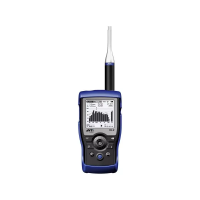21Page 5
QUICK GUIDECommission an Installed Sound Environment
Connect the MR-PRO to a line
input of your system.
Connect the XL2 to a line output
from your system.
A fault that connects two of the wires in the cable, such as
PIN 1 and PIN 2, is detected.
For tips on finding faults, see Appendix A.
How To Measure THD+N
A component in your system may add an unacceptable level of harmonics, distortion and/or noise to
the signal chain, either because the component is not installed or grounded correctly, the gains are
too low or too high, or the component is faulty or simply inferior quality. You can measure this with
the THD+N function of the XL2.
On the MR-PRO, select GENERATOR from the main menu, click on WAV and select SINE, set the
LVL to 0.00 dBu and the frequency (f) to 1.000 kHz.
On the XL2, select RMS/THD+N from the main menu, set the Filter to Z-WEIGHTING (to measure a
flat response across all frequencies), set the units of LVLRMS to dBu, and the units of THDN to %.
The indicator shows if the input signal is balanced.
The LVLRMS value indicates how much the level of the original signal has gained or lost: 0.0 dBu
represents no gain or loss.
The FREQ value indicates the principle frequency detected by the XL2. In the example 1.00000 kHz.
www.nti-audio.com

